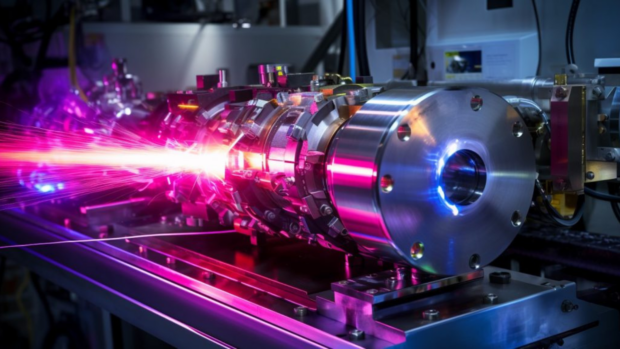The US Department of Energy’s SLAC National Accelerator Laboratory has successfully deployed the upgraded Linac Coherent Light Source (LCLS) X-ray free-electron laser (XFEL) to emit its first X-rays. With an estimated cost of $1.1 million, the LCLS-II is a million times faster than its predecessor, generating a million X-ray flashes per second. This astonishing advancement in the field of X-ray lasers may bring about groundbreaking developments in biology, chemistry, physics, and other scientific disciplines. The purpose of the LCLS-II X-ray laser system and its functioning will be explored in this article, along with a discussion on other laser developments.
How does the record-breaking X-ray laser work?

The X-ray laser’s significance is put into perspective by the science news website Interesting Engineering, which highlights the achievements of its predecessor. The original Linac Coherent Light Source enabled scientists to observe photosynthesis in plants and algae, shedding light on the process of sunlight absorption and oxygen release. It also facilitated the creation of the first “molecular movie,” leading to a better understanding of complex chemical reactions. Furthermore, the LCLS played a role in studying planetary evolution and the formation of diamond rains. Its first laser was fired in April 2009. Subsequently, the DOE’s SLAC developed the LCLS-II, a larger version with the capability to produce a significantly higher number of X-ray bursts due to its superconducting accelerator. This accelerator consists of 37 modules that cool down helium to extremely low temperatures of -456°F or -271°C, just above absolute zero. These low temperatures allow the accelerator to increase electrons’ energy states with minimal energy losses. Despite this upgrade, the SLAC researchers decided to retain the original copper pipe accelerator, which enables data collection across a wide energy range and facilitates more efficient experiments and expanded research opportunities.
What are some other laser projects?

The Department of Energy’s laser program is not the only recent laser-related development. Google has been testing a new method of providing internet connectivity using lasers. Known as Project Taara, it utilizes light to transmit information at high speeds through the air using a narrow, invisible beam. Mahesh Krishnaswamy, the General Manager, described it as simple as a digital camera with a laser pointer. The transmitter fires a laser containing data to the receiver’s “camera,” which interprets and converts it into data. Contrary to common belief, Project Taara’s light beam works in various environments, including forested regions, urban areas, bodies of water, and railway tracks, where wireless internet is not feasible. In contrast to the SLAC X-ray laser, the Chinese military has developed a massive laser, which can be fired indefinitely. Researchers at the National University of Defense Technology figured out a cooling system that utilizes flowing gas to remove excess heat. In August 2023, Yuan Shengfu published a paper on a similar cooling system that employs helium gas, marking a breakthrough in enhancing the performance of high-energy laser systems.
Conclusion
The recent firing of the world’s largest X-ray laser, the LCLS-II, signifies the potential for remarkable scientific discoveries. With this advanced X-ray laser, scientists can now observe previously undetectable phenomena in real-time, leading to a deeper understanding of intricate processes. This breakthrough opens up new possibilities for conducting experiments that were previously unattainable. Stay tuned for further updates on the LCLS-II’s latest scientific projects. For the latest digital tips and trends, visit Inquirer Tech.
Denial of responsibility! Vigour Times is an automatic aggregator of Global media. In each content, the hyperlink to the primary source is specified. All trademarks belong to their rightful owners, and all materials to their authors. For any complaint, please reach us at – [email protected]. We will take necessary action within 24 hours.


